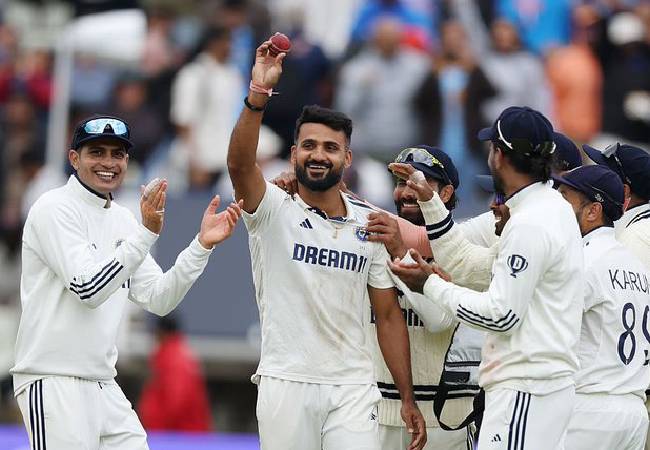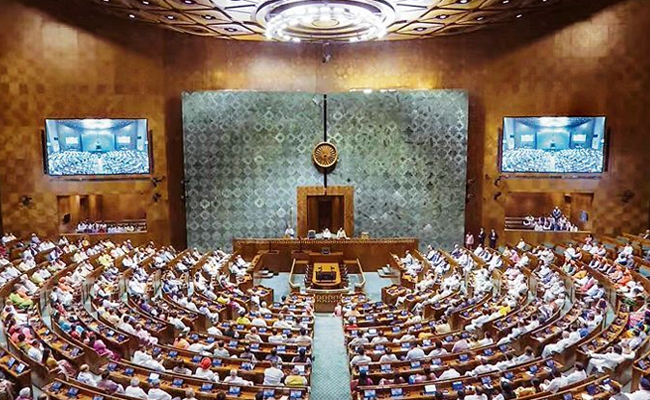Birmingham (PTI): India recorded a dominant 337-run win in the second Test after dismissing England for 271 in their second innings on the final day here on Sunday.
With the thumping win -- India's first-ever in Tests at Edgbaston -- Shubman Gil and Co. levelled the five-match series 1-1.
Resuming the day at 72 for 3, England were reduced to 153 for 6 by lunch, with India's bowlers maintaining relentless pressure.
The hosts were eventually bowled out in the second session, never posing a real threat to India’s mammoth 608-run target.
Pacer Akash Deep (6/99) picked his maiden five-for in Tests. He rocked England early striking twice in a rain-delayed morning session.
He returned after lunch to deliver the decisive blow, dismissing Jamie Smith (88), who was the only England batter to show fight in an otherwise underwhelming batting performance by the hosts.
He then took the final wicket of Brydon Carse (38).
The third Test begins in London on July 10.
Brief Scores.
India 587 & 427/6 declared in 83 overs (Shubman Gill 161, Ravindra Jadeja 69 not out, Josh Tongue 2/93.
England 407 and 271 in 68.1 overs (Jamie Smith 88, Brydon Carse 38, Akash Deep 6/99).
Let the Truth be known. If you read VB and like VB, please be a VB Supporter and Help us deliver the Truth to one and all.
New Delhi (PTI): Vice President C P Radhakrishnan on Saturday led Parliamentarians in paying floral tributes to those who died fending off terrorists who attacked the Parliament House in 2001.
On the 24th anniversary of the attack, Prime Minister Narendra Modi and Radhakrishnan, who is also the Rajya Sabha Chair, were among the first to offer tributes.
A brief function is held outside the now old Parliament building (Samvidhan Sadan) every December 13 to mark the day.
CISF personnel presented a salute or "samman guard" at the venue, after which a moment of silence was observed to mark the anniversary. Till 2023, the CRPF used to offer 'salami shastra' (present arms).
Congress leader Sonia Gandhi, Leader of the Opposition in the Lok Sabha Rahul Gandhi, and his sister Priyanka Gandhi Vadra, a senior party leader, were also present at the event. Union ministers Kiren Rijiju, Jitendra Singh and Arjun Ram Meghwal also lined up to offer flower petals at the photographs of the personnel who went down foiling the attack.
Lok Sabha Speaker Om Birla is in Latur to attend the funeral of former speaker of the Lower House of Parliament and ex-Union minister Shivraj Patil.
The attack was carried out by five armed terrorists, but personnel from the now former Parliament Security Service, CRPF and Delhi Police foiled the attack, with no terrorist being able to enter the building.
Six Delhi Police personnel, two Parliament Security Service personnel, a gardener and a TV video journalist were killed in the attack. All five terrorists were gunned down in the forecourt of the then Parliament building.





